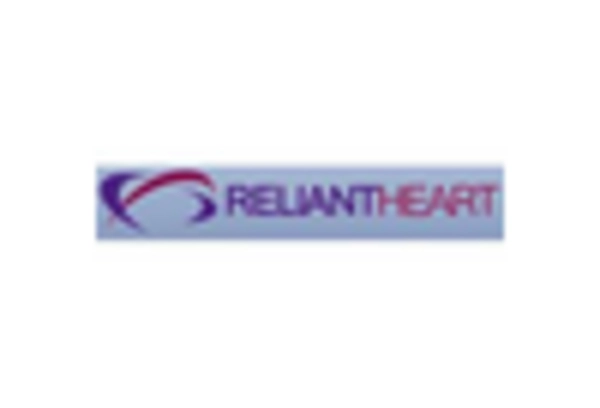Government Initiatives and Funding
Government initiatives aimed at improving healthcare infrastructure in the GCC region are playing a vital role in the growth of the ventricular assist-devices market. Increased funding for cardiac care programs and research initiatives is expected to enhance the availability of advanced medical technologies. For instance, several GCC countries have launched national health strategies that prioritize the treatment of cardiovascular diseases. This support not only facilitates the adoption of ventricular assist devices but also encourages local manufacturers to innovate and produce these devices. The financial backing from government bodies is likely to stimulate market growth, making advanced cardiac care more accessible to patients.
Rising Prevalence of Heart Diseases
The increasing incidence of heart diseases in the GCC region is a primary driver for the ventricular assist-devices market. According to health statistics, cardiovascular diseases account for a significant portion of mortality rates, prompting healthcare systems to seek advanced treatment options. The demand for ventricular assist devices is likely to rise as these devices provide critical support for patients with severe heart failure. The market is projected to grow at a CAGR of approximately 8% over the next few years, reflecting the urgent need for innovative solutions in cardiac care. As healthcare providers focus on improving patient outcomes, the adoption of ventricular assist devices is expected to become more prevalent, thereby driving market growth.
Growing Awareness and Patient Advocacy
There is a noticeable increase in awareness regarding heart health and the benefits of ventricular assist devices among patients and healthcare professionals in the GCC. Patient advocacy groups are actively promoting education on heart diseases and available treatment options, which is likely to lead to higher demand for ventricular assist devices. As more patients become informed about their treatment choices, the market is expected to see a rise in the adoption of these devices. This trend is further supported by healthcare providers who are increasingly recommending ventricular assist devices as viable options for managing severe heart failure, thereby expanding the market.
Technological Innovations in Device Design
Innovations in the design and functionality of ventricular assist devices are significantly influencing the market. Recent advancements have led to the development of smaller, more efficient devices that offer improved patient comfort and usability. These innovations include enhanced biocompatibility and reduced risk of complications, which are crucial for patient acceptance. The introduction of wireless monitoring systems also allows for better management of patients' conditions. As these technologies evolve, they are likely to attract more investments and interest from healthcare providers, further propelling the ventricular assist-devices market. The integration of artificial intelligence and machine learning in device operation may also enhance performance and patient outcomes.
Aging Population and Increased Healthcare Demand
The aging population in the GCC is contributing to the rising demand for healthcare services, particularly in the field of cardiology. As individuals age, the risk of developing heart-related conditions increases, leading to a higher prevalence of heart failure. This demographic shift is likely to drive the ventricular assist-devices market as healthcare systems seek effective solutions to manage these conditions. The market is expected to expand as more elderly patients require advanced cardiac support. Additionally, the growing emphasis on personalized medicine and tailored treatment plans for older adults may further enhance the adoption of ventricular assist devices, reflecting a shift towards more comprehensive cardiac care.

















Leave a Comment